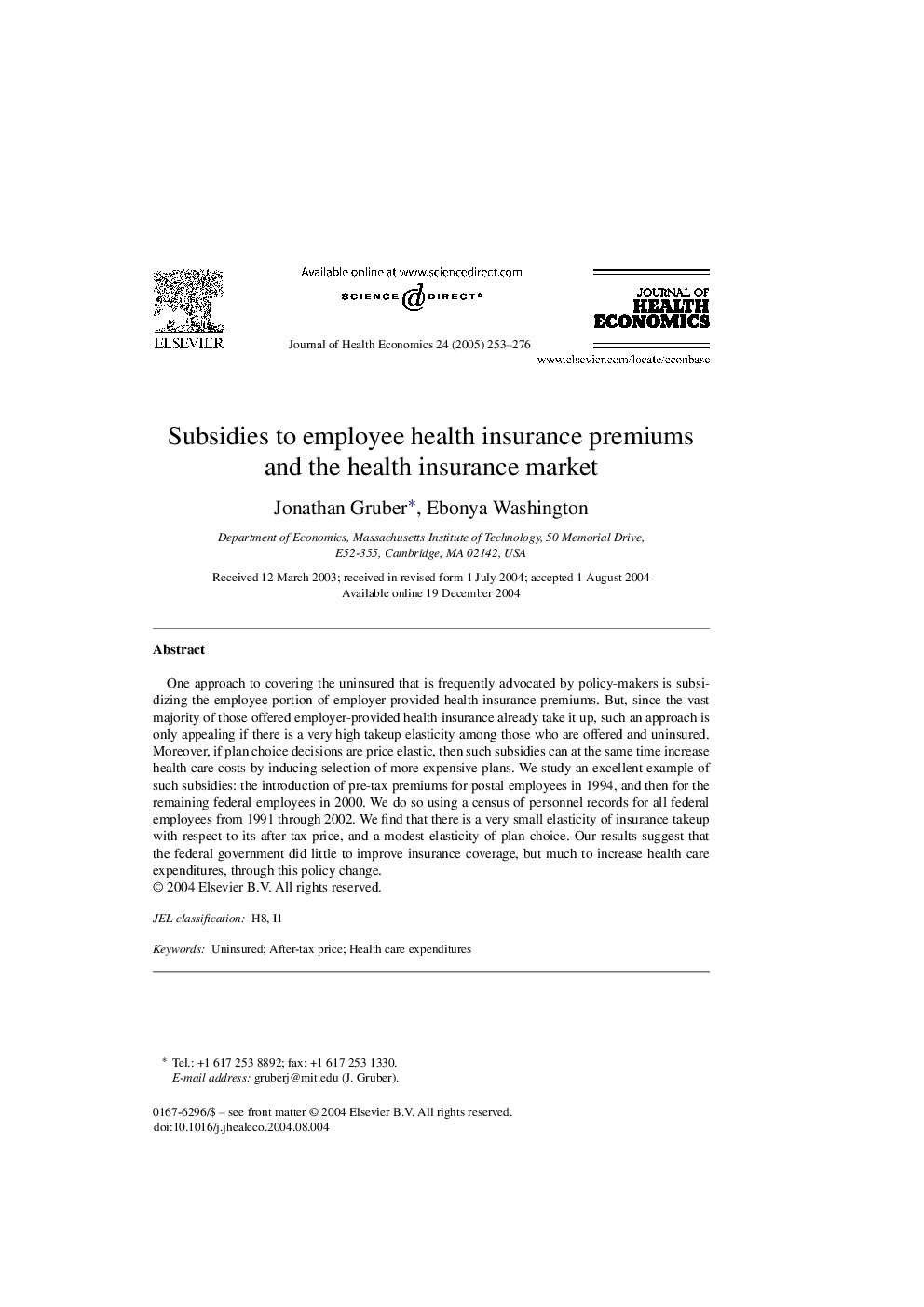| Article ID | Journal | Published Year | Pages | File Type |
|---|---|---|---|---|
| 10476492 | Journal of Health Economics | 2005 | 24 Pages |
Abstract
One approach to covering the uninsured that is frequently advocated by policy-makers is subsidizing the employee portion of employer-provided health insurance premiums. But, since the vast majority of those offered employer-provided health insurance already take it up, such an approach is only appealing if there is a very high takeup elasticity among those who are offered and uninsured. Moreover, if plan choice decisions are price elastic, then such subsidies can at the same time increase health care costs by inducing selection of more expensive plans. We study an excellent example of such subsidies: the introduction of pre-tax premiums for postal employees in 1994, and then for the remaining federal employees in 2000. We do so using a census of personnel records for all federal employees from 1991 through 2002. We find that there is a very small elasticity of insurance takeup with respect to its after-tax price, and a modest elasticity of plan choice. Our results suggest that the federal government did little to improve insurance coverage, but much to increase health care expenditures, through this policy change.
Keywords
Related Topics
Health Sciences
Medicine and Dentistry
Public Health and Health Policy
Authors
Jonathan Gruber, Ebonya Washington,
